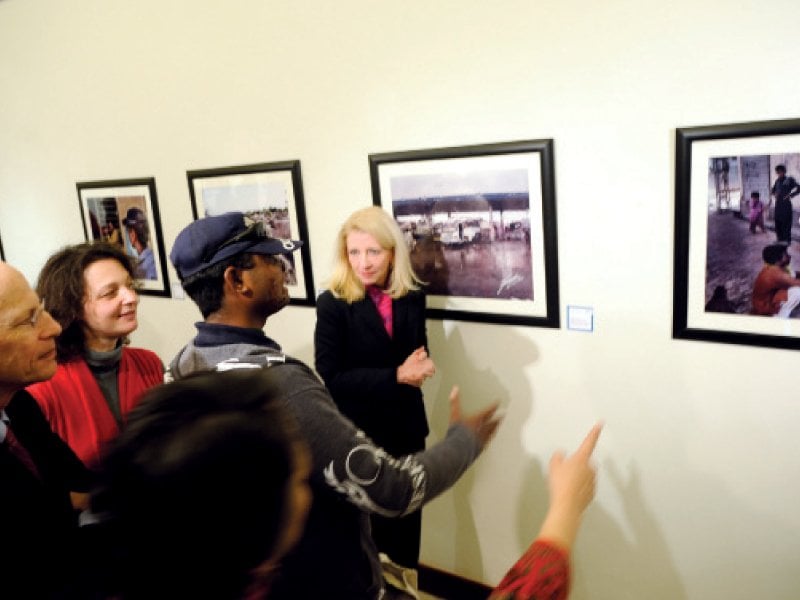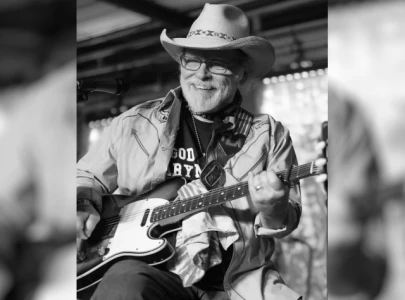
Sumera, an unsmiling twelve-year-old stood by a set of four photographs of herself and her kin. Taken in and around her home in Multan, the pictures reveal the girl’s zeal for her newfound preoccupation, one of them showing a timer mode “selfie”, another showing her aunt and the aunt’s mother engrossed in domestic work outside the rural, mud house.
She is among the nine acid attack survivors who participated in a two-week photography training workshop last year. Four of the workshop participants, including Sumera, were present at the three-day photography exhibition which began at the National Art Gallery on Wednesday. They were seen lingering near their art pieces which speak of resilience, a will to survive and heartfelt inspiration.
“It is because of the workshop that I’m standing here at a national art gallery. I have learnt so much during the brief time we spent photographing together. Also, for anyone else who has to go through what we survived, I want to say: never lose heart. We have come this far and we want to go even further,” said Farooq, 29, who hails from Lodhran. One of his photographs shows his ancestral graveyard, where his late father is buried. Another one is a blurry image, perhaps taken from the back of a bus window, depicting Pirwadhai between the pixels.
The workshop was conducted by the Acid Survivors Foundation (ASF) under the Aurat Foudnation’s Gender Equity Programme, which aims to strengthen private shelters, provides psychological and legal counselling and offers skills training as part of the rehabilitation process for acid attack survivors.
The workshop was conducted by the Spanish photographer Diego Sanchez and a Pakistani colleague, who taught the survivors about expressing themselves through photography. The goal was to assist the survivors in their rehabilitation process while providing them with photographic knowledge and skills, which may later result in an income-generating activity.
US Ambassador-at-Large for Global Women’s Issues Catherine Russel, who inaugurated the exhibition, said, “Women’s rights are human rights, and violence against women is a violation of human rights. The United States is committed to working with Pakistan to eliminate violence against women. I believe that initiatives such as this project, which is aimed at assisting survivors in their rehabilitation process, while providing them with the knowledge of photography which can be used as an entrepreneurial venture, can bring hope to the lives of these brave women,” she added.
ASF Chairperson Valerie Khan demanded the government to pass a comprehensive Acid and Burn Crime Bill at the provincial level to ensure rehabilitation services for survivors. “A proactive and constructive response to acid and burn violence must be part of the wider indigenous policy to counter gender-based violence in the country. For that, we need a stronger legal framework with an adequate implementation mechanism,” she said.
The photographs on display will be on sale at the event. Proceeds will help buy photographic equipment for acid attack survivors.
Published in The Express Tribune, February 13th, 2014.

1724238420-0/Untitled-design-(3)1724238420-0-165x106.webp)

1731678234-0/pete-(1)1731678234-0-165x106.webp)












COMMENTS
Comments are moderated and generally will be posted if they are on-topic and not abusive.
For more information, please see our Comments FAQ